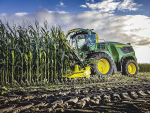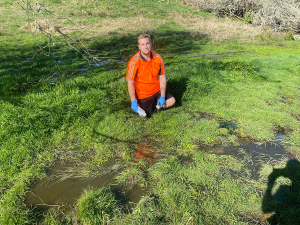Despite the challenges over the last 30 months, worldwide sales of agricultural tractors and machinery have remained buoyant – albeit with disruptions of raw materials, components and shortages of staff.
In the nine months from January to September 2022, the market remained at higher volumes than before the 2020 pandemic. However, industry sources are predicting that between the end of the year and into the first part of 2023, the sector is likely to be affected by inflation and geopolitical uncertainty.
In 2020, despite the ravages of the Covid pandemic that forced a halt to production activities and a slowdown of trade, transport and logistics, the world tractor market held up well, closing with an increase of 7.7% to 2,200,000 newly registered tractors.
In 2021, there was also a marked recovery, with increases in the United States of 10%, India 13% and Europe 16.6%. Meanwhile, China contracted as it still grapples with the Covid emergency and related restrictions, as well as a poor domestic economic situation. This all led to the agricultural machinery market globally growing by around 13% in 2021.
This year’s headwinds include the serious political and economic crisis brought about by the war between Russia and Ukraine, major rises in inflation, rapidly escalating energy costs, the continuing difficulties with the availability of ferrous and plastic raw materials, as well as rising costs for logistics and transport.
Despite this, agricultural machinery has maintained good sales levels, although they do appear to be coming under pressure: In the nine months from January to September 2022, India reported production of 665,000 units – a drop of 2.3% compared to 2021. During the same period, the US market recorded 210,000 units, down 14.3% on 2021, but with a sales volume still higher than pre-Covid levels.
Meanwhile, the European market also seems to be suffering from the deterioration of the general economic situation. Total production was down 7.6% in the first nine months of 2022. Germany has seen a drop in tractor sales of 7.4% of 23,400 units and France fell by 4.5% to 23,500 units. Both are still higher than the pre-Covid level of 2019.
Meanwhile, smaller markets such as the Czech Republic, Hungary, Serbia and Croatia showed a noticeable increase. The overall market trend confirms that the demand for agricultural mechanisation, with the expectation that the market will quickly get back on track as soon as the economic situation improves.
Over the next decade, global agricultural production is estimated to grow by 17% to meet the needs of a population that will increase from 7.8 billion in 2021 to 8.6 billion in 2031. This is tipped to be driven by China, followed by India and the Asia-Pacific regions, while sub-Saharan Africa will also see its production capacity increase.
Increased yields are expected to lead to growth in grain production and meat. Poultry grew by over 16% and pork by 17%. It is estimated that world meat production will reach 377 million tonnes in 2031, to meet a demand coming mainly from developing and emerging countries.
There is also a suggestion that there will be a move to autonomy in supplies, partly reducing dependence on the five big producers of China, the US, the EU, Brazil and the Russian Federation. All of this suggests that world trade in agricultural machinery is expected to grow by around 6% between 2023 and 2026.



















